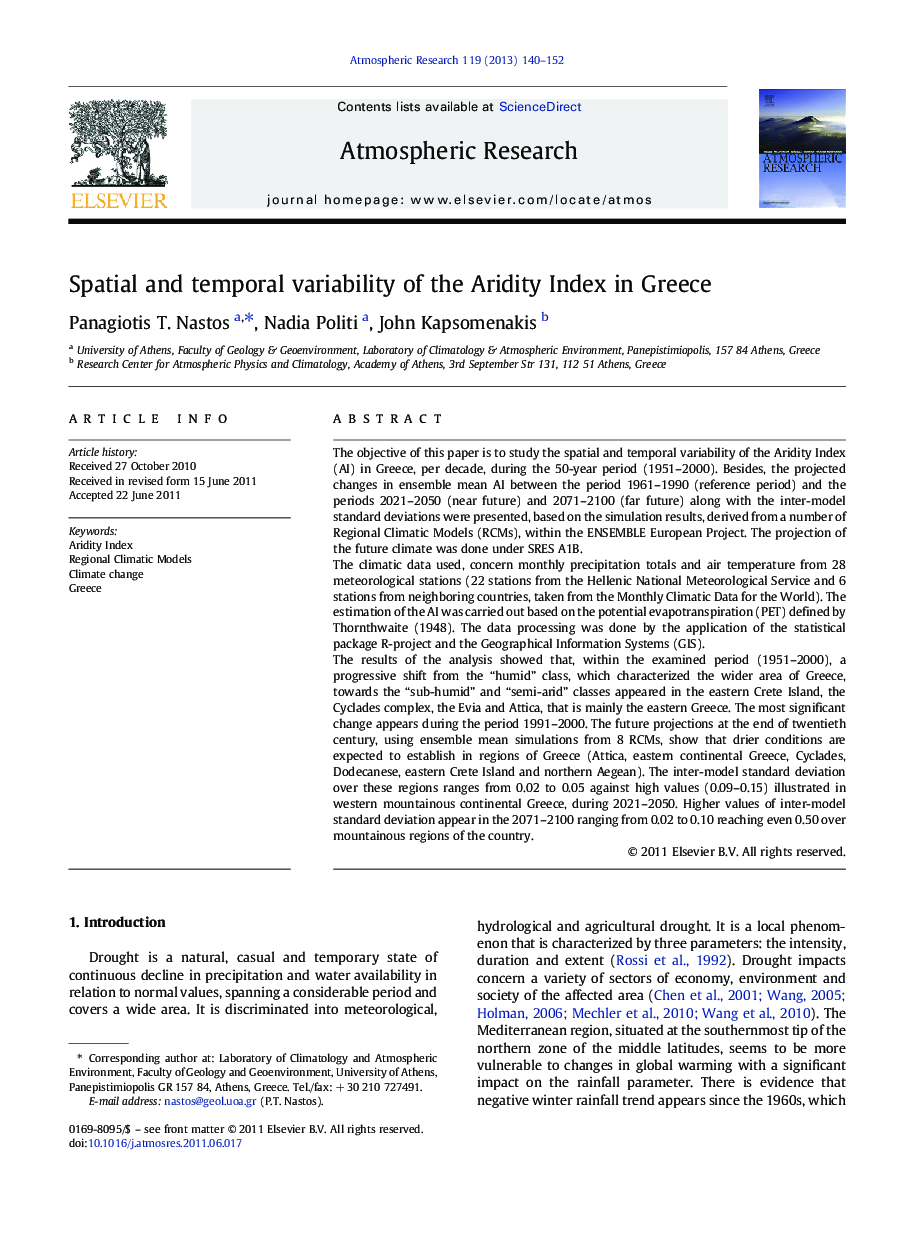| کد مقاله | کد نشریه | سال انتشار | مقاله انگلیسی | نسخه تمام متن |
|---|---|---|---|---|
| 4450166 | 1620546 | 2013 | 13 صفحه PDF | دانلود رایگان |

The objective of this paper is to study the spatial and temporal variability of the Aridity Index (AI) in Greece, per decade, during the 50-year period (1951–2000). Besides, the projected changes in ensemble mean AI between the period 1961–1990 (reference period) and the periods 2021–2050 (near future) and 2071–2100 (far future) along with the inter-model standard deviations were presented, based on the simulation results, derived from a number of Regional Climatic Models (RCMs), within the ENSEMBLE European Project. The projection of the future climate was done under SRES A1B.The climatic data used, concern monthly precipitation totals and air temperature from 28 meteorological stations (22 stations from the Hellenic National Meteorological Service and 6 stations from neighboring countries, taken from the Monthly Climatic Data for the World). The estimation of the AI was carried out based on the potential evapotranspiration (PET) defined by Thornthwaite (1948). The data processing was done by the application of the statistical package R-project and the Geographical Information Systems (GIS).The results of the analysis showed that, within the examined period (1951–2000), a progressive shift from the “humid” class, which characterized the wider area of Greece, towards the “sub-humid” and “semi-arid” classes appeared in the eastern Crete Island, the Cyclades complex, the Evia and Attica, that is mainly the eastern Greece. The most significant change appears during the period 1991–2000. The future projections at the end of twentieth century, using ensemble mean simulations from 8 RCMs, show that drier conditions are expected to establish in regions of Greece (Attica, eastern continental Greece, Cyclades, Dodecanese, eastern Crete Island and northern Aegean). The inter-model standard deviation over these regions ranges from 0.02 to 0.05 against high values (0.09–0.15) illustrated in western mountainous continental Greece, during 2021–2050. Higher values of inter-model standard deviation appear in the 2071–2100 ranging from 0.02 to 0.10 reaching even 0.50 over mountainous regions of the country.
► We examined the spatio-temporal variability of the Aridity Index in Greece.
► Historical period 1951–2000 and future periods 2021–2050 and 2071–2100 were studied.
► Regional Climatic Models (RCMs), within the ENSEMBLE European Project, were used.
► Mild shift towards drier conditions in 2021–2050, against strong shift in 2071–2100.
Journal: Atmospheric Research - Volume 119, January 2013, Pages 140–152